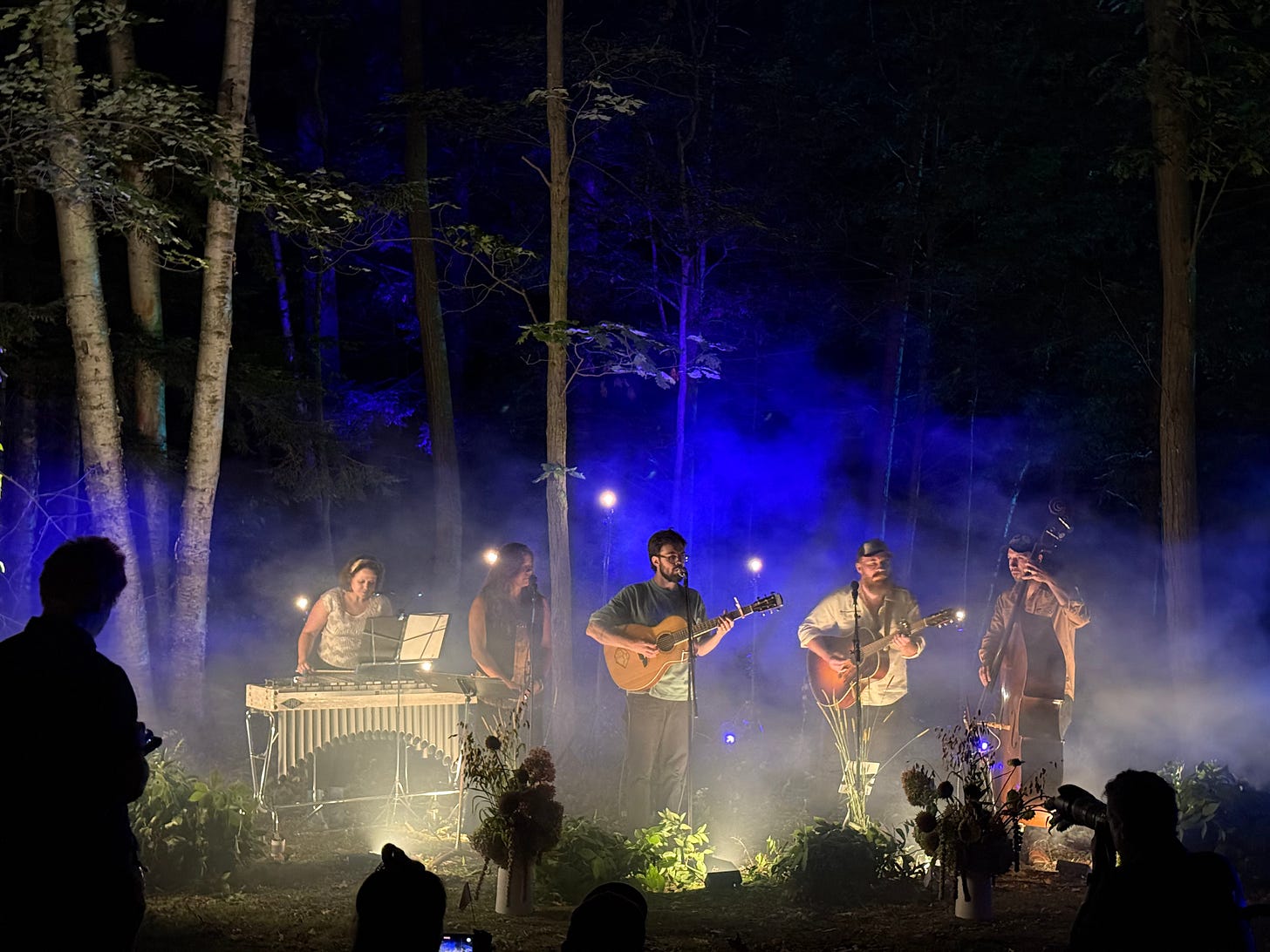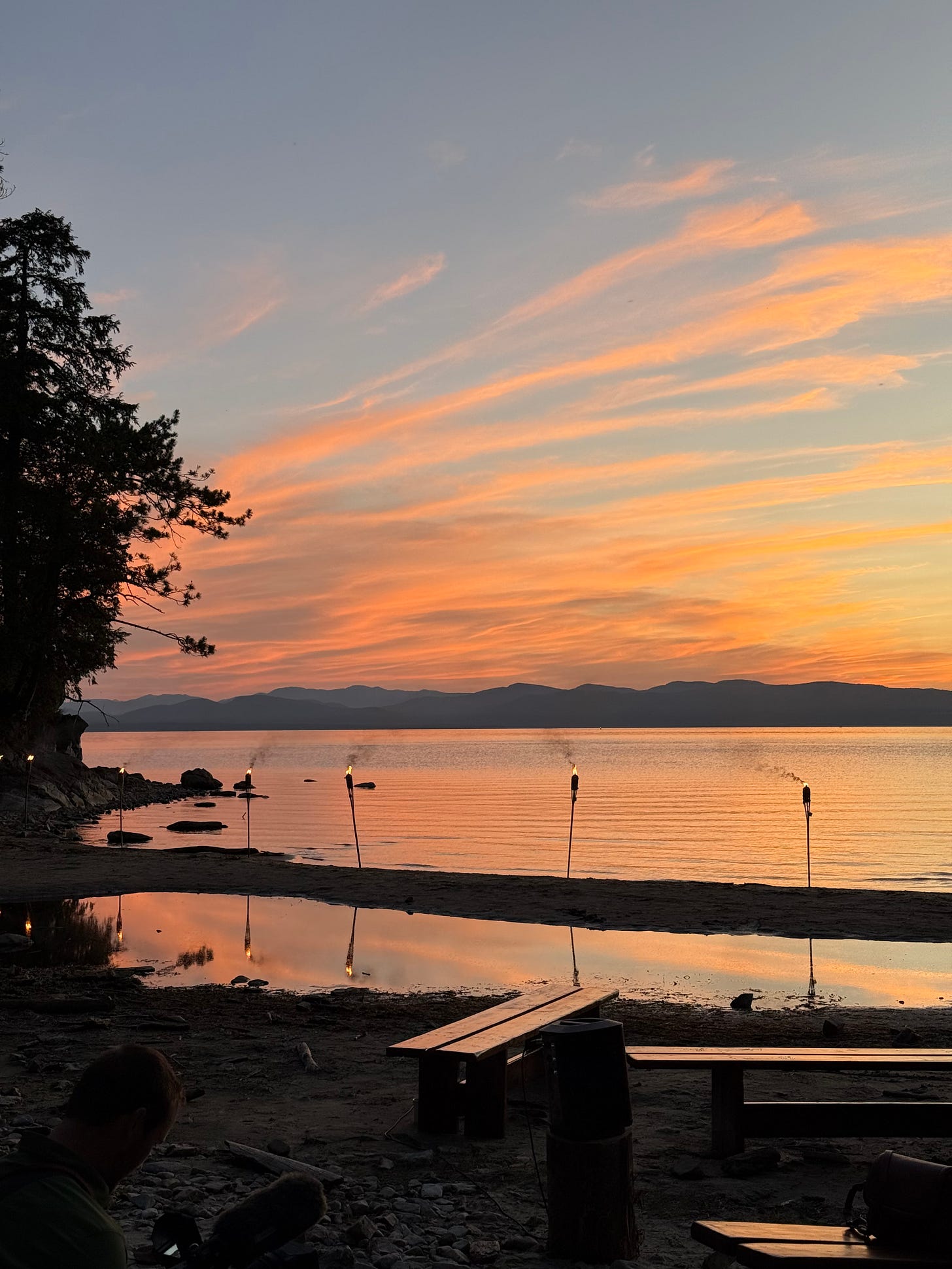Words matter
Finding a narrative for the opportunity of geospatial.
I was lucky enough to support the See Change Sessions - Earth Observation Data track last week in Burlington, Vermont, as a topic guide. This meeting was designed to help build narratives around critical global concerns and policies. Highlighting the power of stories and the give-and-take nature of storytelling.
Burlington was a beautiful location, providing both fertile soil for growing ideas and a blank page on which to sketch rough narratives.
In my role, I was asked to paint a picture of the future. I based my thoughts on the poem below. Both setting a scene and then exploring a world where technical difficulties had been diminished.
Petabytes of data flow through the thin skin of our atmosphere every day. Millions of pixels with their associated ephemeris report on the state of our landscapes when assembled. Providing a visual reflection our changing planet in almost real time.
But today, we are not.
The Lament of the Lonely Pixel
Captured by a CCD in the sky,
Never looked at by a human eye,
Memory, consumed by unshared reflection.
I want to explore what the final line of this poem really gets at.
While those pixels can be interpreted into measurements and stories of physical risk, vegetation health, supply chain security, ecological change, and urban development, broad adoption has been troubled.
The Lament of the Lonely Pixel is a poem that attempts to capture a sense of quiet inertia, pent-up potential energy, and opportunity.
Memory is a snapshot of time. Time is a critical and deeply unrenewable commodity. We must protect our time and the storage of those fragile memories. Memory also signifies the digital space a pixel consumes. The consumption of memory reminds us of the constrained nature of our computing and biological systems. These constraints are a practical truth for satellites, but also a broader truth for the digital hoarding our species is over-occupied with. Beyond constraints, memory is also temporal, especially for those systems limited by biology.
So, while time flies, time also robs us of memory. If those memories are unshared, then an opportunity is missed.
If something is unshared, perhaps selfishness has barred its distribution, or perhaps it’s been forgotten. Unshared implies the negative of shared, suggesting that not sharing is more purposeful than neglectful. Unshared is important because, in many ways, a pixel is something to be shared as much as seen. A pixel can be used for numerous purposes; it can be regarded, analyzed, and used to determine a landscape’s features and changes. More so, with concerns over data equity, a shared pixel is a higher-value product. A businessperson will say that capturing once and selling or using a pixel many times is more profitable, and they are right. Those are great unit economics.
But the usage of a pixel to build a deeper understanding of our planet is also key. Because as a place on our planet reflecting that special wavelength, that signature of substance, we know that each and every location is involved in innumerable planetary processes. Every pixel must be shared as it describes part of the system of the everyday climate of our lives.
That pixel is a single measurement of the beauty of nature through the electromagnetic reflection of our sun by dirt, rock, or leaf, witnessed by a camera in the sky. That reflection is a part of the primordial complexity of the everyday. As a personal reflection, this word reminds us to consider our planet and the waste, the abandonment of digital detritus.
The reflection of a complex digital capability consuming space while not being used feels like an important message for a population addicted to consumption.
Because, while every pixel is a problem to solve, it is also part of its own solution.
This poem could be a woeful dystopian view on digital waste, but I feel it’s a call to action for focus and action. Even if those pixels are not being used today, they could be used tomorrow. We have an opportunity to create systems that can put these pixels to work. While there are numerous technical and business model barriers to overcome, there is a clear opportunity in the creation of a living map of the activity on our Planet’s surface.
Given we now have this digital mine of planetary knowledge, how can we explore it for valuable signatures? Those digital ore bodies. How can we make every pixel as useful as it should be, as part of the tangle of landscape processes?
On reflection, I feel the Geospatial Foundation Models presently being built by IBM (TeraMind, Prithvi), ClayAI, LGND, NASA, and ESA are an excellent start. While not perfect yet, these efforts are absolutely critical for the advancement of our community. If the Geospatial community is to build a digital twin of our planet, then these foundation models are undoubtedly the nucleus of that activity.
Thanks to the See Change Sessions team (especially Bret and Julian) for inviting me.





One of the comments that I appreciated the most, in line with this thinking, is that we already have mountains of data and we're still not making good decisions in service to addressing global challenges. So, how might we make what we have accessible, while acknowledging the gaps going forward.